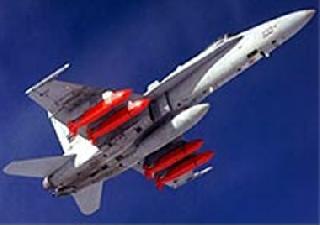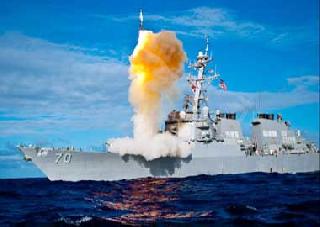
Joint Standoff Weapon C-1.
FARNBOROUGH (BNS): The US Navy has completed a series of three captive flight tests on Raytheon's Joint Standoff Weapon C-1 (JSOW).
The company plans to achieve the initial operating capability of the programme by 2012.
The Joint Standoff Weapon is a family of low-cost, air-to-ground weapons that employs an integrated GPS- inertial navigation system and terminal imaging infrared seeker, guiding the weapon to the target.
"The Raytheon-US Navy team completed a test series that showed JSOW C-1's seeker can detect moving maritime targets. The tests also demonstrated that JSOW C-1 can communicate via its two-way SCWDL," Phyllis McEnroe, Raytheon's JSOW programme director, said.
"The JSOW platform is a 'truck' with many options that continues to evolve to meet emerging threats. Though not a programme of record, we are working on a JSOW extended range variant with an objective range of up to 300 nautical miles (345 statute miles)," he added.
JSOW extended range had completed its first demonstration flight in October 2009, flying more than 260 nautical miles.
JSOW C-1 adds moving maritime target capability and the two-way Strike Common Weapon Datalink (SCWDL) to the combat-proven weapon.
The weapon's long standoff range of approximately 70 nautical miles (130 kilometers) allows delivery from well outside the lethal range of most enemy air defences.
 Previous Article
Previous Article Next Article
Next Article












The Indian Air Force, in its flight trials evaluation report submitted before the Defence Ministry l..
view articleAn insight into the Medium Multi-Role Combat Aircraft competition...
view articleSky enthusiasts can now spot the International Space Station (ISS) commanded by Indian-American astr..
view article